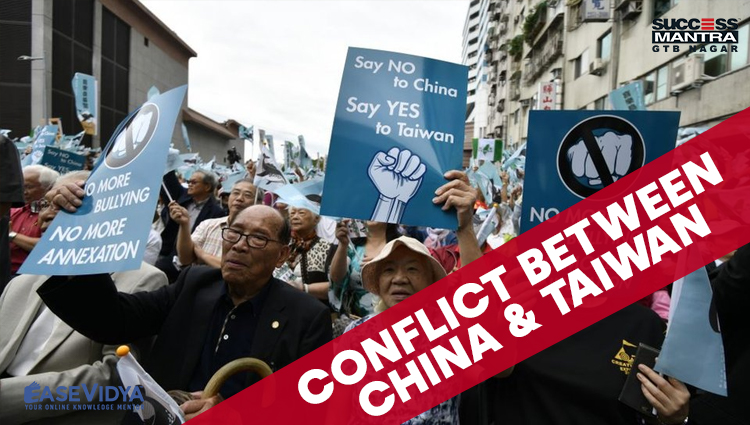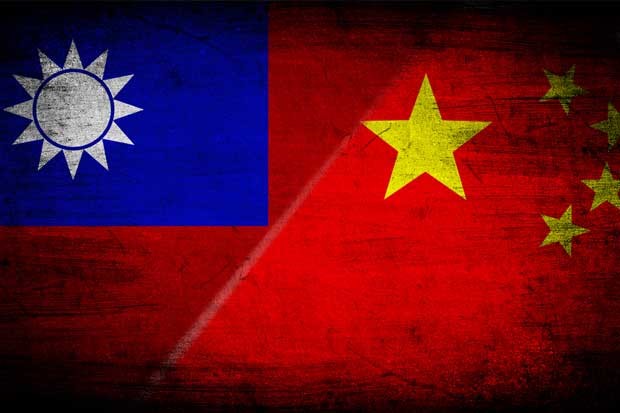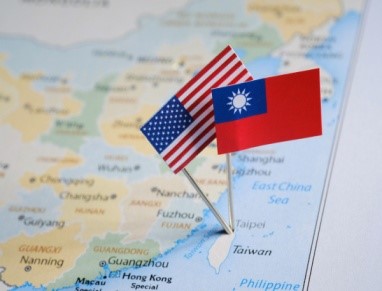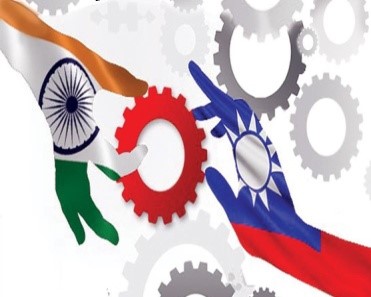
CONFLICT BETWEEN CHINA AND TAIWAN
CONFLICT BETWEEN CHINA & TAIWAN

The USA has reaffirmed its support for Taiwan following China's warplanes entering Taiwan’s air defence identification zone. These overflights were part of a long-standing pattern of incursions by China aimed at pressuring the present democratically elected government of Taiwan to accept China's demand to recognise Taiwan as a part of Chinese territory.
HISTORICAL BACKGROUND OF THE CONFLICT
China and Taiwan separated amid civil war in 1949 and China considers Taiwan part of its territory to be taken control of by force if necessary. But Taiwan's leaders say that Taiwan is a sovereign state. After decades of hostile intentions and angry rhetoric, relations between China and Taiwan started improving in the 1980s. China put forward a formula, known as "one country, two systems", under which Taiwan would be given significant autonomy if it accepted Chinese reunification. In Taiwan, the offer was rejected, but the government did relax rules on visits to and investment in China. There were also limited talks between the two sides' unofficial representatives, though Beijing's insistence that Taiwan's Republic of China (ROC) government is illegitimate prevented government-to-government contact. China's implementation of a national security law in Hong Kong in 2020 was seen by many as a yet another sign that Beijing was becoming significantly more assertive in the region.
USA VIS-A-VIS CHINA OVER TAIWAN

The Chinese government passed an Anti-Secession Law in 2005 that provides conditions under which China might employ non-peaceful means to prevent the permanent separation of Taiwan from mainland China. The USA as part of the Taiwan Relations Act (TRA) 1979, is required to assist Taiwan if coerced or attacked by China. Thus, the recent chinese incursions and USA’s opposition to it are manifestations of this contradicting stand of the USA and China on Taiwan.
USA’s Stand: The USA criticised the pattern of ongoing attempts by China to intimidate its neighbours, including Taiwan. It has urged China to cease its military, diplomatic, and economic pressure against Taiwan and instead engage in meaningful dialogue with Taiwan’s democratically elected representatives.
CHINESE CONCERN OVER THE ISSUE
USA’s Strategic and Defense Support to Taiwan: Taiwan has sought to improve its defenses with the purchase of USA weapons, including upgraded F-16 fighter jets, armed drones, rocket systems and Harpoon missiles. The Taiwanese government has also boosted USA’s support for Taiwan’s indigenous arms industry, including launching a program to build new submarines to counter China’s ever-growing naval capabilities.
Presence of the USA forces in Neighboring Waters: A USA aircraft carrier group led by the warship Theodore Roosevelt has entered the South China Sea to ensure freedom of the seas, and build partnerships that foster maritime security.
One China Policy Challenged: This means that countries seeking diplomatic relations with the People's Republic of China (PRC, Mainland China) must break official relations with the Republic of China (ROC, Taiwan) and vice versa. The existent diplomatic relationship of the Taiwan and its membership in intergovernmental organizations challenges this policy: The ROC, Taiwan has diplomatic relations with 15 countries and substantive ties with many others such as Australia, Canada, EU nations, Japan and New Zealand. Besides, Taiwan has full membership in 38 intergovernmental organizations and their subsidiary bodies, including the World Trade Organization, Asia-Pacific Economic Cooperation, Asian Development Bank and Central American Bank for Economic Integration.
India’s Stand on the Issue: Since 1949, India has accepted the “One China” policy that accepts Taiwan and Tibet as part of China. However, India uses the policy to make a diplomatic point, i.e., if India believes in “One China” policy, China should also believe in a “One India” policy. Even though India has stopped mentioning its adherence to One China policy in joint statements and official documents since 2010, its engagement with Taiwan is still restricted due to the framework of ties with China. India and Taiwan do not have formal diplomatic relations but since 1995, both sides have maintained representative offices in each other’s capitals that function as de facto embassies.
INDIA & TAIWAN RELATIONSHIP

India and Taiwan do not maintain formal diplomatic relations. The areas of cooperation between India and Taiwan have been limited due to negligible political relations. From 1995 to 2014, the bilateral trade turnover has grown manifold from just $934 million to $5.91 billion. In the field of science and technology, there are more than thirty ongoing government-funded joint research projects. In August 2015, the Taiwan-based Foxconn, one of the largest hardware manufacturers in the world, announced an investment of $5 billion in India. India and Taiwan in 2018 signed a bilateral investment agreement. India-Taiwan trade ties have been expanded and Taiwanese firms are prominent investors in India, Taiwan has for long been a world leader in high-tech hardware manufacturing, and can contribute much to the “Make in India”, “Digital India” and “Smart Cities” campaigns. Taiwan’s agro-technology and food processing technology can also be very beneficial for India’s agriculture sector. Both sides have also expanded educational exchanges after a mutual degree recognition agreement in higher education was signed in 2010.












0 Comment